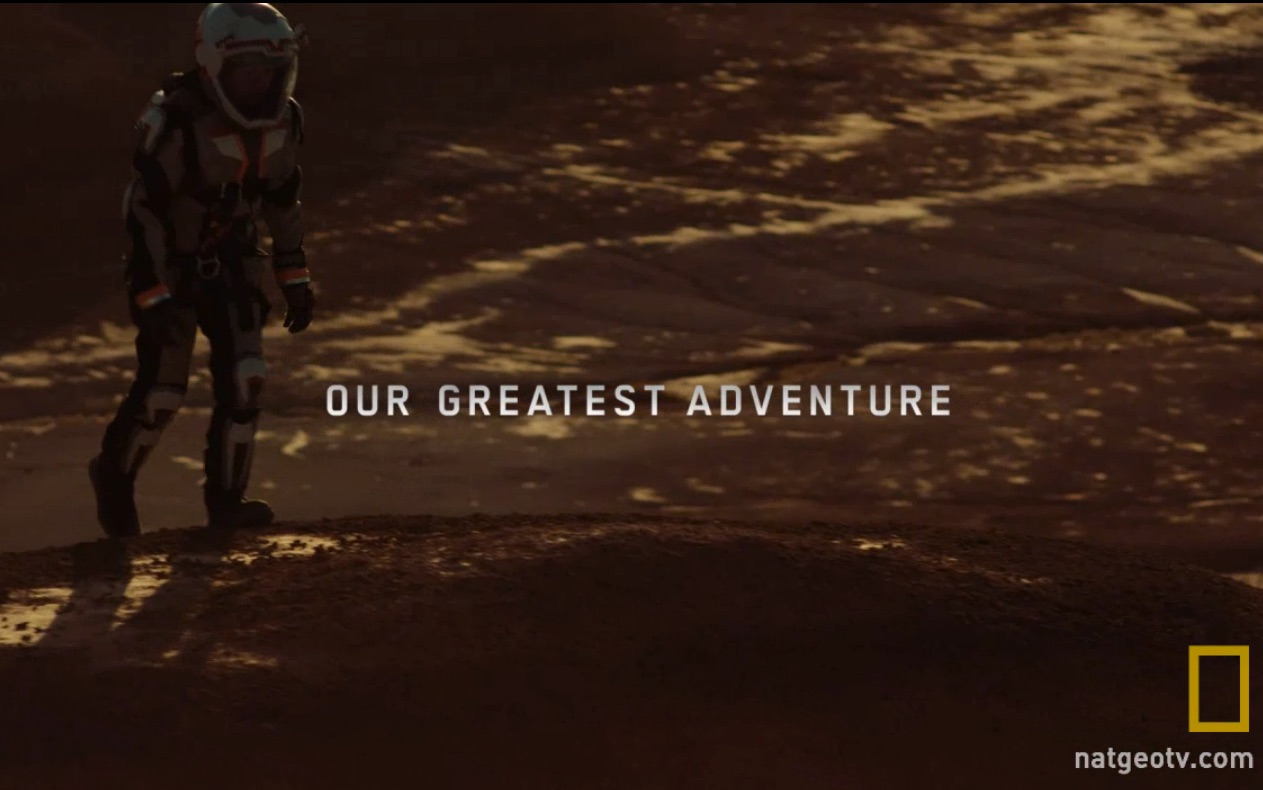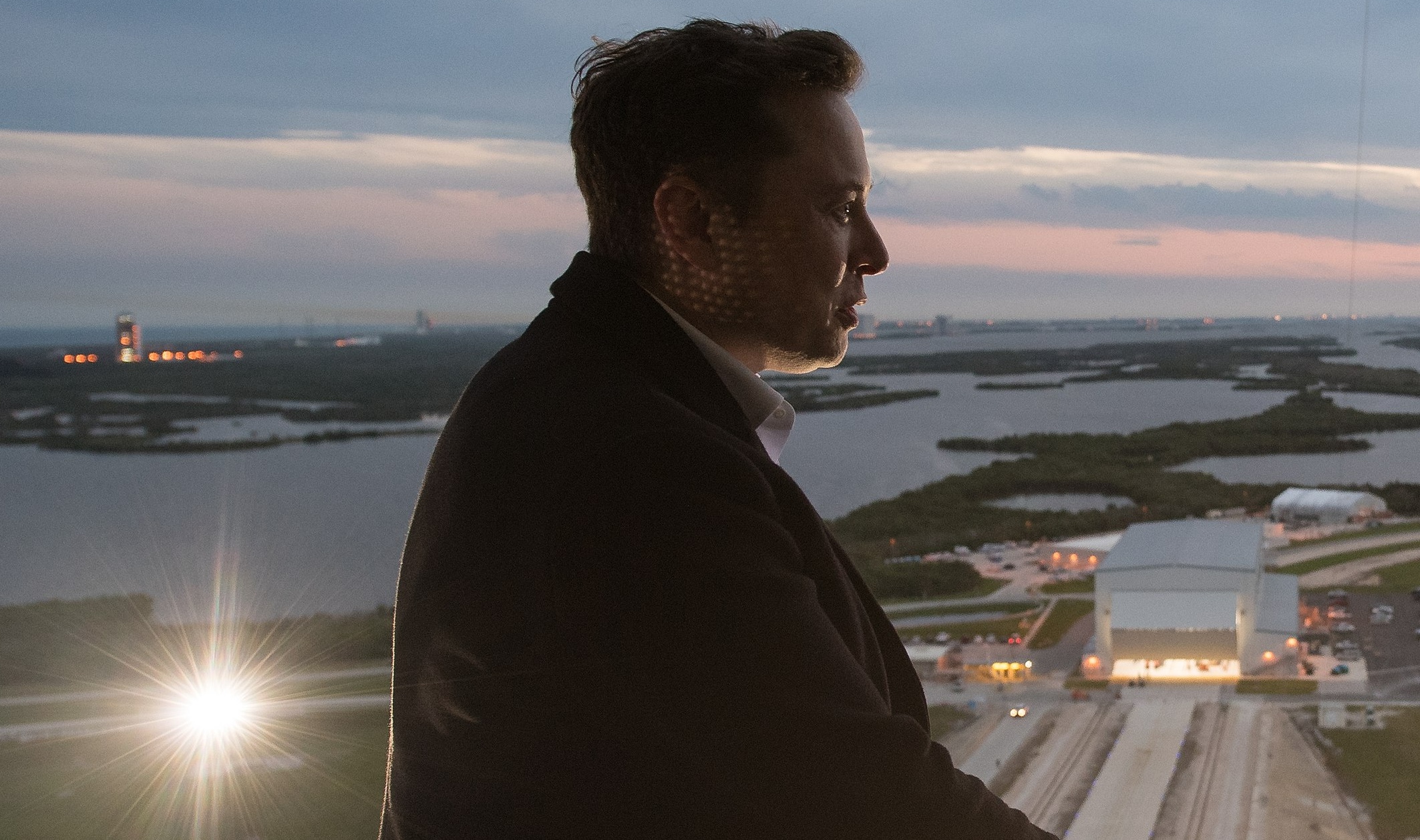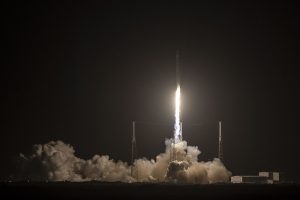Lifestyle
Elon Musk and SpaceX featured in Nat Geo MARS mini-series

National Geographic (“NatGeo”) has launched their MARS mini-series to be aired every Monday evening for a total of six weeks. It’s a fictional drama set in the year 2033 imagining the first human mission to the surface of Mars with a huge focus on the scientific accomplishments necessary to make such a journey reality. Cut in with the drama are interviews with scientists explaining the complexities of the mission being imagined including, of course, our favorite Mars-bound-humanity-game-changer, Elon Musk.
Elon’s role in the first episode was to talk about the “big picture” challenges immediately apparent in a Mars mission:
- The risks of getting to Mars
- The adventure of it all
- The historical significance of launching from Pad 39A
- Why Mars is a goal to begin with
- Why landing on Mars is hard
- The importance of rocket reusability
- How fast we could establish a Mars colony
There’s been critique that the NatGeo series was essentially a big commercial for SpaceX and Elon. While the intention was (probably) not such, I can’t really argue that the impact (outcome?) wasn’t similar to a commercial. Elon wasn’t significantly over-featured versus others, but all of the modern-day rocket footage they used featured Falcon 9 and the SpaceX facilities.
Honestly though, when you’ve been both leading the charge and are arguably the biggest player (i.e., rocket company) in the Mars game, a realistic drama series featuring humanity’s first trip to the red planet is probably going to include you in a major way. And seriously, how awkward would it be pretending otherwise?
Prequels to the NatGeo MARS Series
In the weeks leading up to the premiere of their MARS series debut, NatGeo published plenty of relevant videos in order to keep curious minds, well, curious and in anticipation for the series. There were three videos that stood out most to me:
- “Before MARS”
Featuring twin girls that become significant players in the main MARS series, this video gave a short coming-of-age backstory wherein one of the sisters embraces her interest in space science via a ham radio/wise neighbor experience. I thought it was well done and a sweet tale, but kind of missed the “feels” it was supposed to inspire. Perhaps as the girls’ characters are fleshed out in the coming episodes, it will have more impact.
- “Is it okay to touch Mars?” by Vsauce1 (YouTube channel)
This video wasn’t published by NatGeo, but is was sponsored by them and host Michael Stevens promoted the MARS series throughout while discussing the science behind it. There were plenty of interesting Mars topics not generally discussed such as space “bugs” infecting the Earth and rover scientists living by “Mars time”. I found it to be a good primer for the series.
- “NatGeo Live | Sending Humans to Mars: How will we do it?”
This video featured a panel of three scientists answering questions about the challenges of a Mars mission after showing clips from the series. Automation, 3D printing, and terraforming were the primary featured topics after general discussion of mission requirements. There was disagreement on the topic of terraforming Mars that I thought was very interesting and recommend watching.
Fun Trivia
After watching and reading through most of the material published on this series, there were a few interesting things I noted and wanted to share for fun:

“Flight of Icarus” | Credit: Internet Archive Book Image
- The spaceship carrying the Mars astronauts in the series is called “Daedalus”, named after the Greek god who fathered the infamous waxed-wing god Icarus (great Iron Maiden song, too). In the 1986 movie “Space Camp” (starring Kate Capshaw and Leah Thompson), the space station whose oxygen tank reserves save the kids from certain death in space is also called “Daedalus”. Uh, sorry for the spoiler.
- Mars already has an unofficial flag: A tricolor rectangle of red, green, and blue. Each color represents the stages of terraforming the planet from its current red state, to green from vegetation, and finally to blue like Earth. The colors were also inspired by Kim Stanley Robinson’s trilogy Red Mars, Green Mars, and Blue Mars.
- In the “Before Mars” video, ham/amateur radio is a big feature, even allowing one of the girls to communicate with the International Space Station. It actually is possible to communicate with the ISS via ham radio. Astronauts reach out on their free time regularly.
Overall, I thought NatGeo did a great job on the series, intertwining drama with the science to give the viewer an understanding of where we are, where we are going, and why it’s so tough to do it. The series especially shines if you’re looking for a kind of “one-stop” place for all that information in an entertaining way. Unfortunately though, if you’ve been reading about the march towards Mars for some time now, there isn’t much added other than a different perspective and storyline to consider.
I’m looking forward to the coming episodes and, of course, seeing what else Elon has to say along the way. Next up on my playlist: NatGeo’s “Before the Flood” starring Leonardo DiCaprio and featuring our guy Elon.
Onwards.
Elon Musk
X account with 184 followers inadvertently saves US space program amid Musk-Trump row
Needless to say, the X user has far more than 184 followers today after his level-headed feat.

An X user with 184 followers has become the unlikely hero of the United States’ space program by effectively de-escalating a row between SpaceX CEO Elon Musk and President Donald Trump on social media.
Needless to say, the X user has far more than 184 followers today after his level-headed feat.
A Near Fall
During Elon Musk and Donald Trump’s fallout last week, the U.S. President stated in a post on Truth Social that a good way for the United States government to save money would be to terminate subsidies and contracts from the CEO’s companies. Musk responded to Trump’s post by stating that SpaceX will start decommissioning its Dragon spacecraft immediately.
Musk’s comment was received with shock among the space community, partly because the U.S. space program is currently reliant on SpaceX to send supplies and astronauts to the International Space Station (ISS). Without Dragon, the United States will likely have to utilize Russia’s Soyuz for the same services—at a significantly higher price.
X User to the Rescue
It was evident among X users that Musk’s comments about Dragon being decommissioned were posted while emotions were high. It was then no surprise that an X account with 184 followers, @Fab25june, commented on Musk’s post, urging the CEO to rethink his decision. “This is a shame this back and forth. You are both better than this. Cool off and take a step back for a couple days,” the X user wrote in a reply.
Much to the social media platform’s surprise, Musk responded to the user. Even more surprising, the CEO stated that SpaceX would not be decommissioning Dragon after all. “Good advice. Ok, we won’t decommission Dragon,” Musk wrote in a post on X.
Not Planned, But Welcomed
The X user’s comment and Musk’s response were received extremely well by social media users, many of whom noted that @Fab25june’s X comment effectively saved the U.S. space program. In a follow-up comment, the X user, who has over 9,100 followers as of writing, stated that he did not really plan on being a mediator between Musk and Trump.
“Elon Musk replied to me. Somehow, I became the accidental peace broker between two billionaires. I didn’t plan this. I was just being me. Two great minds can do wonders. Sometimes, all it takes is a breather. Grateful for every like, DM, and new follow. Life’s weird. The internet’s weirder. Let’s ride. (Manifesting peace… and maybe a Model Y.)” the X user wrote.
Lifestyle
Tesla Cybertruck takes a bump from epic failing Dodge Charger
The Cybertruck seemed unharmed by the charging Charger.

There comes a time in a driver’s life when one is faced with one’s limitations. For the driver of a Dodge Charger, this time came when he lost control and crashed into a Tesla Cybertruck–an absolute epic fail.
A video of the rather unfortunate incident was shared on the r/TeslaLounge subreddit.
Charging Charger Fails
As could be seen in the video, which was posted on the subreddit by Model Y owner u/Hammer_of_something, a group of teens in a Dodge Charger decided to do some burnouts at a Tesla Supercharger. Unfortunately, the driver of the Charger failed in his burnout or donut attempt, resulting in the mopar sedan going over a curb and bumping a charging Cybertruck.
Ironically, the Dodge Charger seemed to have been parked at a Supercharger stall before its driver decided to perform the failed stunt. This suggests that the vehicle was likely ICE-ing a charging stall before it had its epic fail moment. Amusingly enough, the subreddit member noted that the Cybertruck did not seem like it took any damage at all despite its bump. The Charger, however, seemed like it ran into some trouble after crashing into the truck.
Alleged Aftermath
As per the the r/TeslaLounge subreddit member, the Cybertruck owner came rushing out to his vehicle after the Dodge Charger crashed into it. The Model Y owner then sent over the full video of the incident, which clearly showed the Charger attempting a burnout, failing, and bumping into the Cybertruck. The Cybertruck owner likely appreciated the video, in part because it showed the driver of the Dodge Charger absolutely freaking out after the incident.
The Cybertruck is not an impregnable vehicle, but it can take bumps pretty well thanks to its thick stainless steel body. Based on this video, it appears that the Cybertruck can even take bumps from a charging Charger, all while chilling and charging at a Supercharger. As for the teens in the Dodge, they likely had to provide a long explanation to authorities after the incident, since the cops were called to the location.
Lifestyle
Anti-Elon Musk group crushes Tesla Model 3 with Sherman tank–with unexpected results
Ironically enough, the group’s video ended up highlighting something very positive for Tesla.

Anti-Elon Musk protesters and critics tend to show their disdain for the CEO in various ways, but a recent video from political action group Led By Donkeys definitely takes the cake when it comes to creativity.
Ironially enough, the group’s video also ended up highlighting something very positive for Tesla.
Tank vs. Tesla
In its video, Led By Donkeys featured Ken Turner, a 98-year-old veteran who served in the British army during World War II. The veteran stated that Elon Musk, the richest man in the world, is “using his immense power to support the far-right in Europe, and his money comes from Tesla cars.”
He also noted that he had a message for the Tesla CEO: “We’ve crushed fascism before and we’ll crush it again.” To emphasize his point, the veteran proceeded to drive a Sherman tank over a blue Tesla Model 3 sedan, which, of course, had a plate that read “Fascism.”
The heavy tank crushed the Model 3’s glass roof and windows, much to the delight of Led By Donkeys’ commenters on its official YouTube channel. But at the end of it all, the aftermath of the anti-Elon Musk demonstration ended up showcasing something positive for the electric vehicle maker.
Tesla Model 3 Tanks the Tank?
As could be seen from the wreckage of the Tesla Model 3 after its Sherman encounter, only the glass roof and windows of the all-electric sedan were crushed. Looking at the wreckage of the Model 3, it seemed like its doors could still be opened, and everything on its lower section looked intact.
Considering that a standard M4 Sherman weighs about 66,800 to 84,000 pounds, the Model 3 actually weathered the tank’s assault really well. Granted, the vehicle’s suspension height before the political action group’s demonstration suggests that the Model 3’s high voltage battery had been removed beforehand. But even if it hadn’t been taken off, it seemed like the vehicle’s battery would have survived the heavy ordeal without much incident.
This was highlighted in comments from users on social media platform X, many of whom noted that a person in the Model 3 could very well have survived the ordeal with the Sherman. And that, ultimately, just speaks to the safety of Tesla’s vehicles. There is a reason why Teslas consistently rank among the safest cars on the road, after all.
-

 Elon Musk5 days ago
Elon Musk5 days agoTesla investors will be shocked by Jim Cramer’s latest assessment
-

 News1 week ago
News1 week agoTesla Robotaxi’s biggest challenge seems to be this one thing
-

 Elon Musk2 weeks ago
Elon Musk2 weeks agoFirst Look at Tesla’s Robotaxi App: features, design, and more
-

 News2 weeks ago
News2 weeks agoSpaceX and Elon Musk share insights on Starship Ship 36’s RUD
-

 News2 weeks ago
News2 weeks agoWatch Tesla’s first driverless public Robotaxi rides in Texas
-

 News1 week ago
News1 week agoWatch the first true Tesla Robotaxi intervention by safety monitor
-

 News2 weeks ago
News2 weeks agoTesla has started rolling out initial round of Robotaxi invites
-

 Elon Musk2 weeks ago
Elon Musk2 weeks agoTesla to launch in India in July with vehicles already arriving: report


















